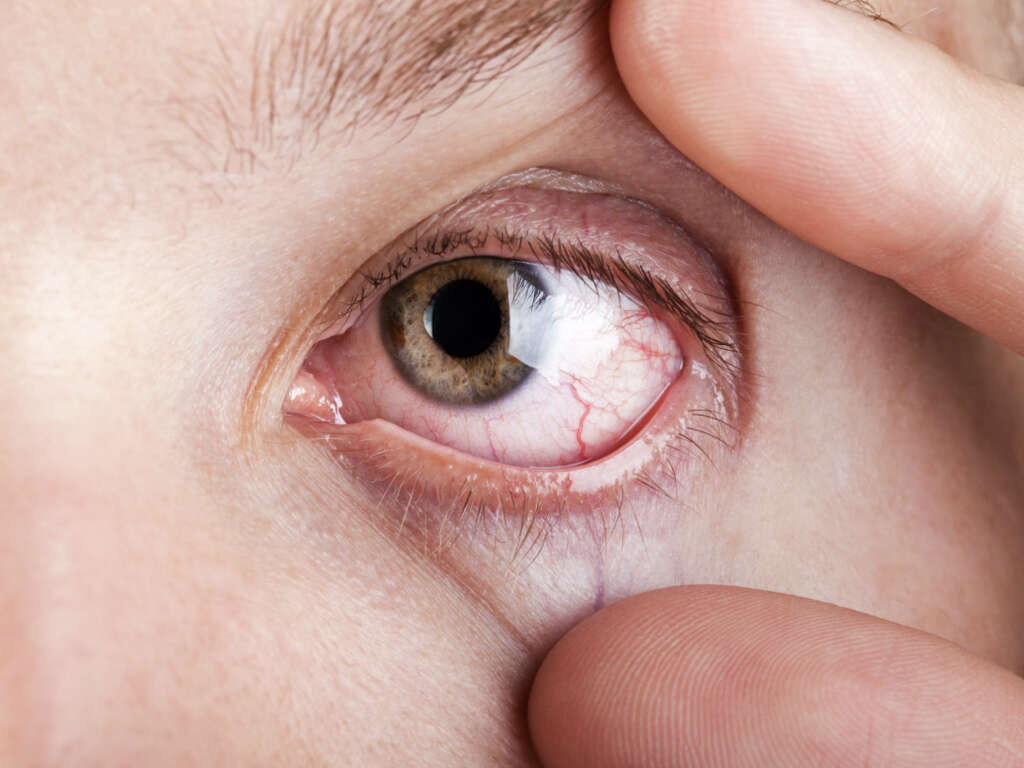10 Causes of Swollen Eyelids
Cause #7: Grave’s Disease
Grave’s disease is an autoimmune condition that is characterized by an overactive thyroid gland. This condition can lead to the release of certain antibodies that attack the host’s tissue (TSH receptor in the thyroid). In about 30% of cases, those suffering from Grave’s disease will have ocular signs and symptoms, otherwise known as Grave’s ophthalmopathy.
In Grave’s ophthalmopathy, cells of the immune system (T cells) can become activated and confuse the thyroid tissue with the tissue behind the eye (retro-orbital space). The T cells that infiltrate the tissue of the eye can stimulate cells known as fibroblasts to produce substances (glycosaminoglycan)that retain fluids. Additionally, some fibroblasts turn into fat cells (adipocytes). Consequently, the tissue in the eye orbit increases in volume, causing several signs and symptoms. Bulging of the eyes (exophthalmos), eye pressure and pain, redness of the eyes, light sensitivity, puffy and retracted eyelids, a gritty sensation in the eyes, double vision, and even vision loss are common signs and symptoms of Grave’s disease when the eyes are involved.
Advertisement












